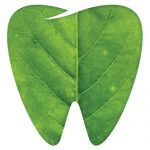In a world that’s far more aware of the importance of sustainability, it can be a challenge to get to grips with marketing jargon. You want to make sure the products you purchase are safe for the environment, but how do you understand the various terms that describe if it is or not?
Three terms you will see thrown around quite a bit are: compostable, degradable, and biodegradable. Do they mean the same thing? Are they different? Is one better than the other? Read on to learn what these three words mean, and if you should be using any product labelled with any of them more than the other.
What is a Biodegradable Product?
Something biodegradable is the epitome of sustainability. It means that the item you have just bought can break down into the natural environment through natural elements and organisms.
The way in which they biodegrade can make all the difference as well. If they use water, organic material, and carbon dioxide, they are breaking down without doing any harm to the environment.
Most products that boast a “biodegradable” label feature sustainable materials and plant by-products.
However, how you dispose of your biodegradable product can matter more than you might think. In a landfill environment, it may not be able to break down while being buried under tonnes of trash. The best way to dispose of such products is by sending them to a recycling plant.








